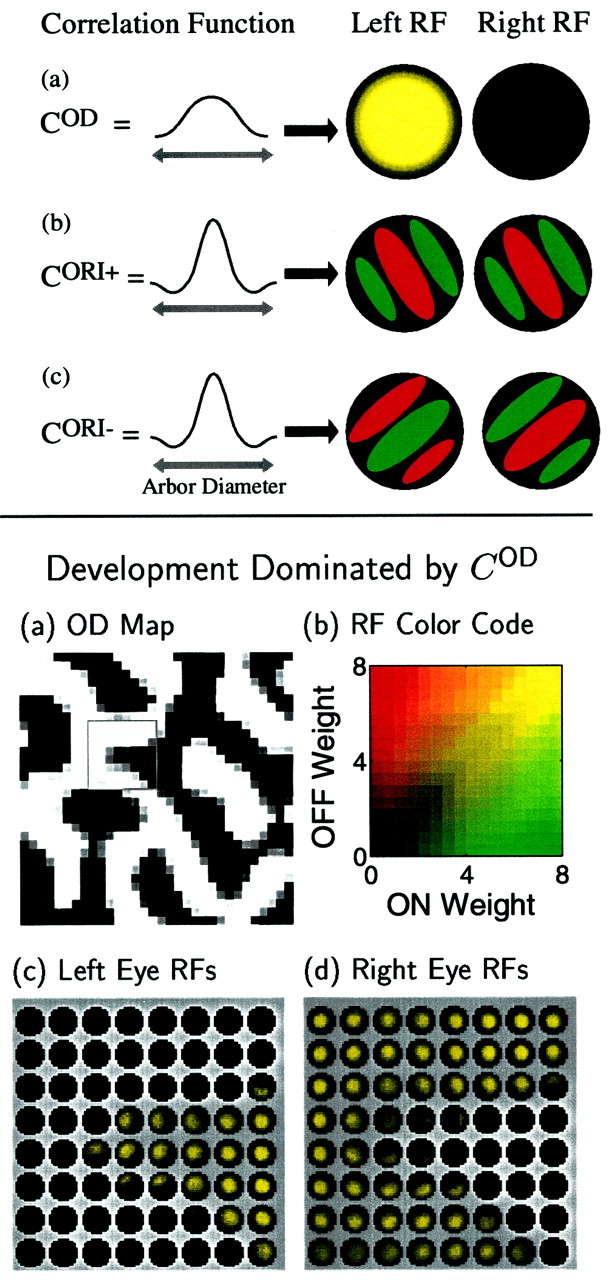Fig. 4.

Top. Determinants of single-cell RF properties for cases in which development is dominated by a single correlation function. a, When COD(α⃗, β⃗) dominates the other correlation functions and is positive for distances within the radius of the arbor function A(x⃗, α⃗), monocular RFs tend to develop. The example RF has no connections to the right eye (shown as black) and high connection strength in the center of the left eye, RF, gradually falling to zero at the edges (shown as decreasing brightness). Yellow indicates that ON and OFF connections are mixed in the left RF. b, When CORI+(α⃗, β⃗) is dominant and oscillates from positive to negative within the arbor radius, as in the Mexican-hat function shown, both the left and right RFs of each cortical cell will develop segregated ON (green) and OFF (red) regions, giving each cell a preferred orientation. The ON and OFF regions in the left RF will be at the same locations as the ON and OFF regions in the right RF. c, When an oscillating CORI−(α⃗, β⃗) dominates, segregated, elongated ON and OFF regions in the left and right RFs again result. However, in this case the ON-center regions in one eye correspond to OFF-center regions in the other, and vice versa. Each form of between-eye matching of ON and OFF regions, in-phase (b) or antiphase (c), yields ocularly matched preferred orientations.
